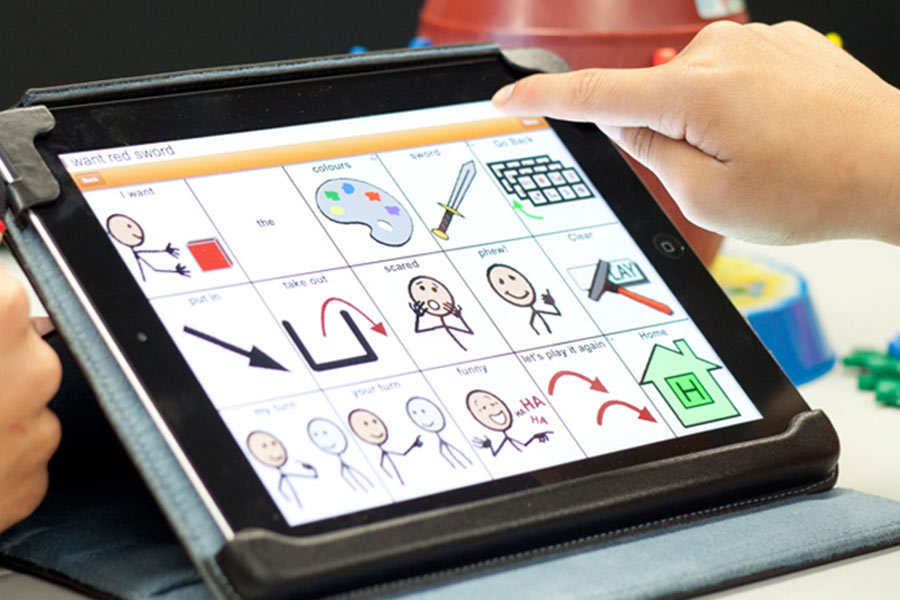Cerebral palsy is a neurological disorder that affects a person’s ability to move and maintain balance and posture. Communication is often a significant hurdle that people with cerebral palsy face. Fortunately, there have been significant advances in communication devices that aim to revolutionize patient care. The latest assistive technology offers a new hope for people with cerebral palsy who struggle with communication. In this article, we’ll explore some of the latest communication devices available and how they can improve the quality of life for people with cerebral palsy.
How Communication Devices are Transforming Cerebral Palsy Care?
Communication devices are transforming cerebral palsy care in a myriad of ways. From providing more efficient communication between doctors and patients to creating more personalized care plans, these devices are allowing for unprecedented levels of care. For instance, adaptive technologies, such as speech-to-text technology, can help those with cerebral palsy to communicate more freely and effectively with their care teams. Additionally, these technologies can help to provide more accurate diagnoses and treatments, thereby improving the overall quality of life for those with cerebral palsy. Furthermore, communication devices for cerebral palsy are helping to improve the quality of life for those with cerebral palsy by providing more accessible and engaging forms of therapy. Through virtual reality and augmented reality, therapy sessions can now be more interactive and stimulating, allowing for a more enjoyable experience. Ultimately, communication devices are revolutionizing the way cerebral palsy care is provided, leading to greater access and improved outcomes.
The Latest Advances in Communication Devices for Cerebral Palsy
1. Augmentative and Alternative Communication (AAC): AAC devices are communication tools that are used to assist people with cerebral palsy who have difficulty speaking. AAC devices can range from simple picture boards to sophisticated apps that allow individuals to type and communicate using synthesized speech.
2. Eye Gaze Technology: Eye gaze technology is an assistive technology that allows people with cerebral palsy to control a computer using only their eyes. This technology uses a camera to track and interpret eye movements to allow individuals to access computers, communicate, and control their environment.
3. Smartphone Applications: Smartphone applications are a great way for people with cerebral palsy to communicate with others. There are many apps available that allow users to type in text, send messages, and even make video calls.
4. Voice Recognition Software: Voice recognition software allows individuals with cerebral palsy to communicate with the help of a computer. This type of software can be used to type words or sentences, control the computer, and even send emails and text messages.
5. Brain-Computer Interface (BCI): BCI is an advanced technology that allows individuals with cerebral palsy to communicate and control electronic devices using only their thoughts. This technology uses a computer to interpret brain signals, allowing individuals to control their environment and communicate with the help of a computer.
How Communication Devices are Changing the Landscape of Cerebral Palsy Care?
Communication devices are transforming the landscape of cerebral palsy care by providing individuals with an effective means of communication. Communication devices, such as Augmentative and Alternative Communication (AAC) devices, allow individuals with cerebral palsy to communicate their needs, wants, and desires in a way that was not possible before. These devices can be personalized to meet each individual’s specific needs and can be used in conjunction with existing treatments and therapies.
Communication devices also provide a method for individuals with cerebral palsy to remain connected to their family and friends. For example, AAC devices can be used to help individuals participate in online chats, forums, and social media platforms. This allows individuals to stay in touch with their loved ones and to stay up to date on news and events.
Finally, communication devices can help individuals with cerebral palsy to remain independent. For example, devices can be used to control electronic devices, such as lights, TVs, and computers. This allows individuals to remain in control of their environment and to maintain their independence.
Conclusion
The latest advances in communication devices for Cerebral Palsy are revolutionizing patient care by providing those with the condition an opportunity to communicate effectively. These devices have enabled people with Cerebral Palsy to live more independent and fulfilling lives. The improved communication and connection between patients and healthcare providers has also enabled more accurate diagnosis and treatment. This is a major step forward in improving the quality of life for those living with Cerebral Palsy.


